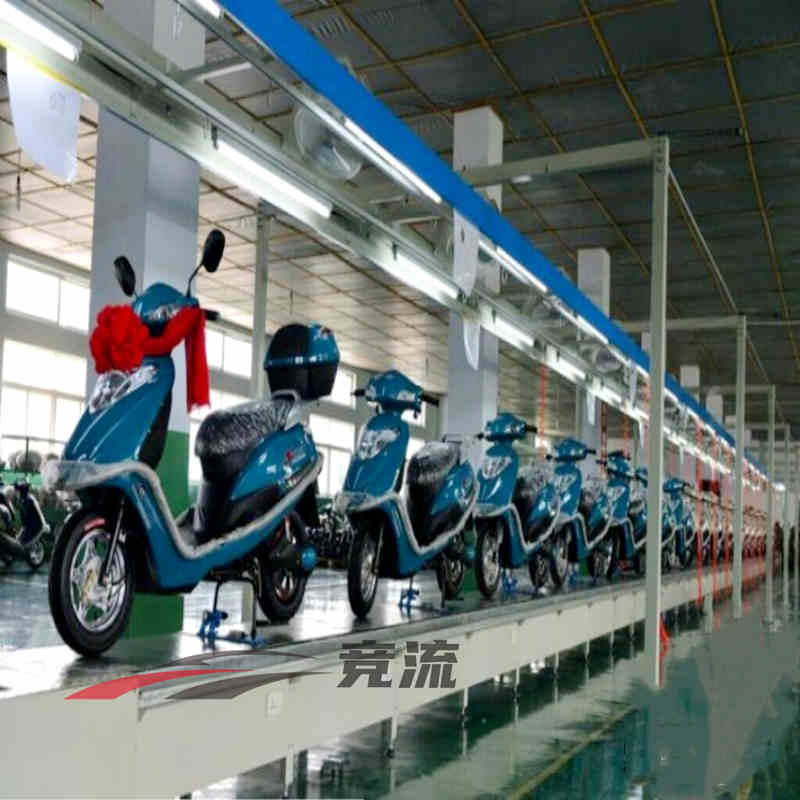
The assembly line of 2-wheelers (such as electric bicycles, motorcycles, traditional bicycles, etc.)...
The assembly line of 2-wheelers (such as electric bicycles, motorcycles, traditional bicycles, etc.) is the production process that assembles parts into a complete product.
1.Flexibility: Support the production of multiple categories such as electric two-wheeled vehicles and fuel motorcycles. It only takes 10 minutes to adjust tooling and procedures for model switching.
2.Intelligent error-prevention: With error-prevention mechanisms such as visual inspection, torque monitoring, and circuit inspection, the assembly defect rate can be controlled below 0.3‰.
3.High efficiency: Through optimization of process rhythm (single-piece flow rhythm can be adjusted for 30-60 seconds), the daily production capacity of a single line can reach 1,500 – 2,000 units, meeting the needs of large-scale mass production.
4.Customization: We can customize the process path and equipment configuration according to customers ‘factory layout, production capacity needs and vehicle characteristics to help achieve efficient and stable production.
1.Parts distribution: Sort the required parts (such as frame, motor, battery, tire, wiring harness, etc.) according to the BOM of the vehicle model, and deliver them to each station through AGV, suspension chain or manual cart.
2.Frame assembly: Assemble various parts of the frame (such as main beams, auxiliary beams, front fork connecting parts, etc.) together by welding, bolting, etc. to form the basic frame.
3.Engine installation: Install the engine on the frame and fix it, connect various pipelines and lines between the engine and the frame, such as fuel pipes, exhaust pipes, wires, etc., and conduct preliminary debugging and testing of the engine.
4.Wheel and tire assembly: Install the wheel hub and tire, then install it on the frame, and adjust the dynamic balance of the wheel to ensure the smoothness and safety of the vehicle when driving.
5.Brake system assembly: Install brake discs, brake pads, brake calipers, brake oil pipes and other brake components, and conduct debugging and venting of the brake system.
6.Electrical system assembly: Install electrical components such as batteries, wire harnesses, lamps, and instrument panels, connect various electrical circuits, and conduct debugging and testing of the electrical system.
7.Assembly of body and trim parts: Install body parts and trim parts such as seats, handlebars, mirrors, side covers, mudguards, etc. to make the appearance of the vehicle complete and beautiful.
8.Final inspection: Conduct a comprehensive visual inspection and functional review on the entire vehicle to ensure that the vehicle meets quality standards and factory requirements.

Previous:
Next: